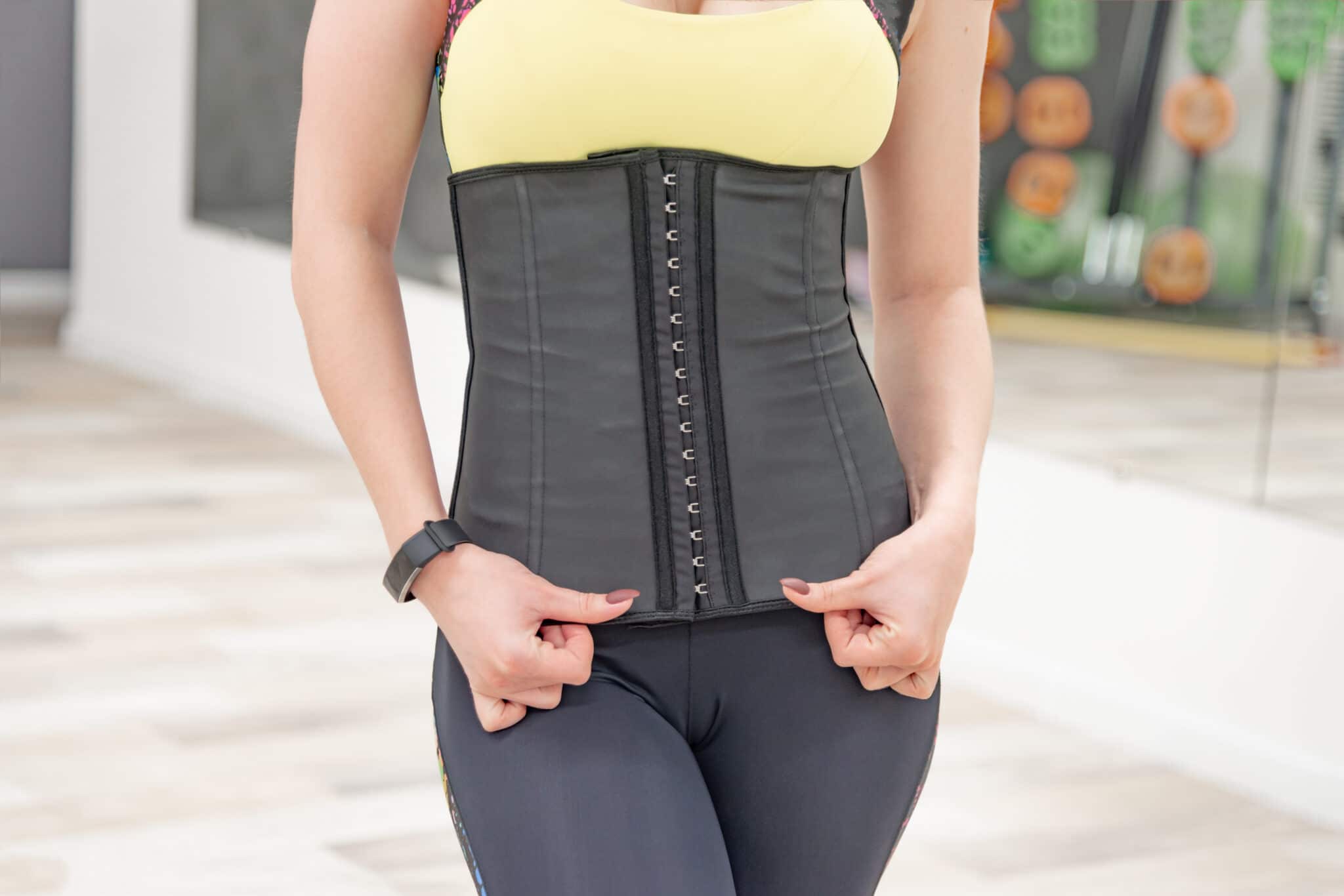Sleeping with a waist trainer can seem like a good way to maximize waist training benefits, but is it harmful to your health?
This modern-day corset is often utilized by those desiring an hourglass figure, but it’s important to know its limits to avoid any risk of physical damage.
Below, we’ve provided everything you need to know if you’re considering sleeping in a waist trainer so you can learn the benefits and potential risks of wearing a corset to bed.
What is a Waist Trainer?
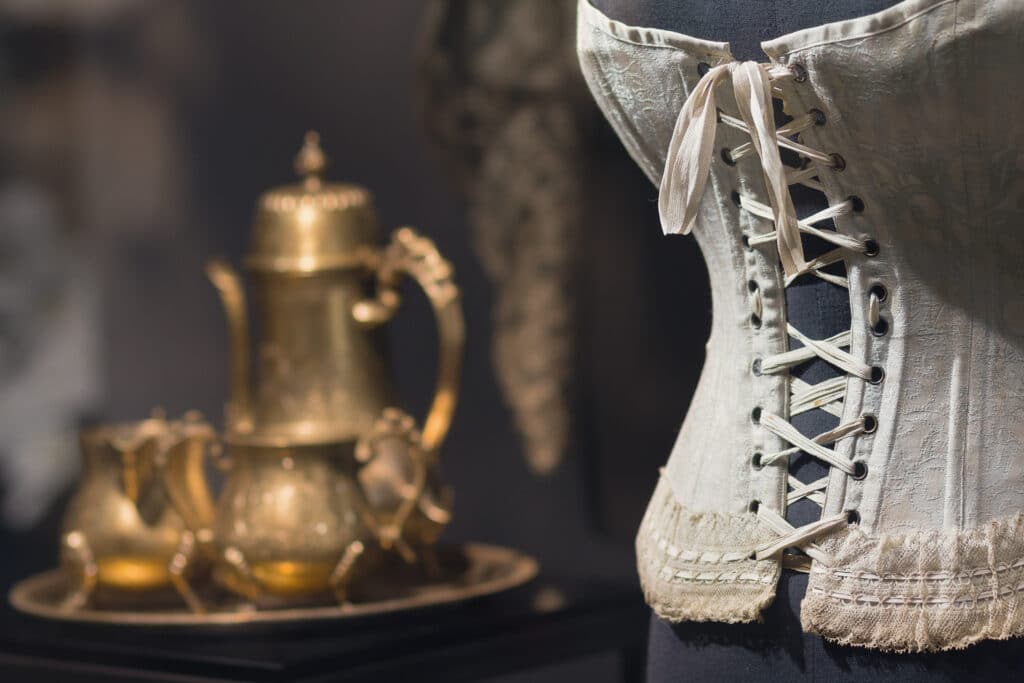
Waist training goes back as far as the 1500s, but it has recently made a comeback as many celebrities can be seen sporting an hourglass shape of the waist throughout social media.
In particular, social media influencer Kim Kardashian had a large part in reviving the trend of waist training when she launched her SKIMS waist trainers that are said to accentuate anyone’s natural curves.
A waist trainer is commonly referred to as the modern-day corset, as it creates the illusion of an hourglass shape once worn around the midsection of the body.
Waist trainers are often featured in three different types: everyday waist trainers, workout waist trainers, and steel-boned waist trainers.
Everyday Waist Trainers
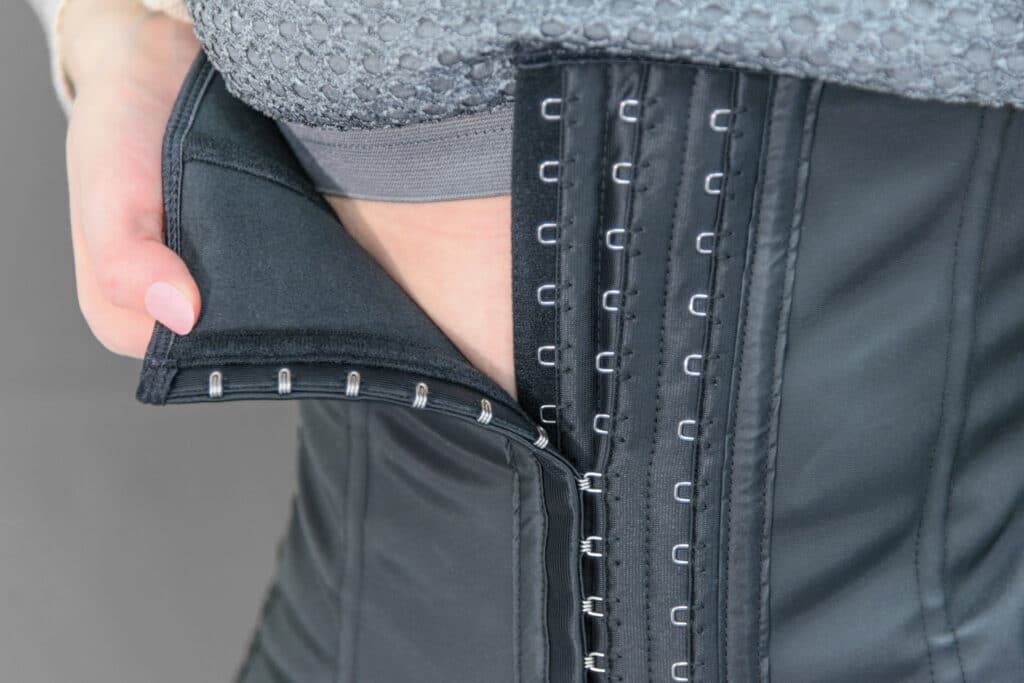
The first type of waist trainer lies beneath clothing, cinching the waist in a discreet fashion.
An everyday waist trainer provides compression to your core with its latex material and hook-and-eye closures. If worn throughout the day, it’s recommended that this waist trainer is worn for at least 8 hours a day.
Workout Waist Trainers
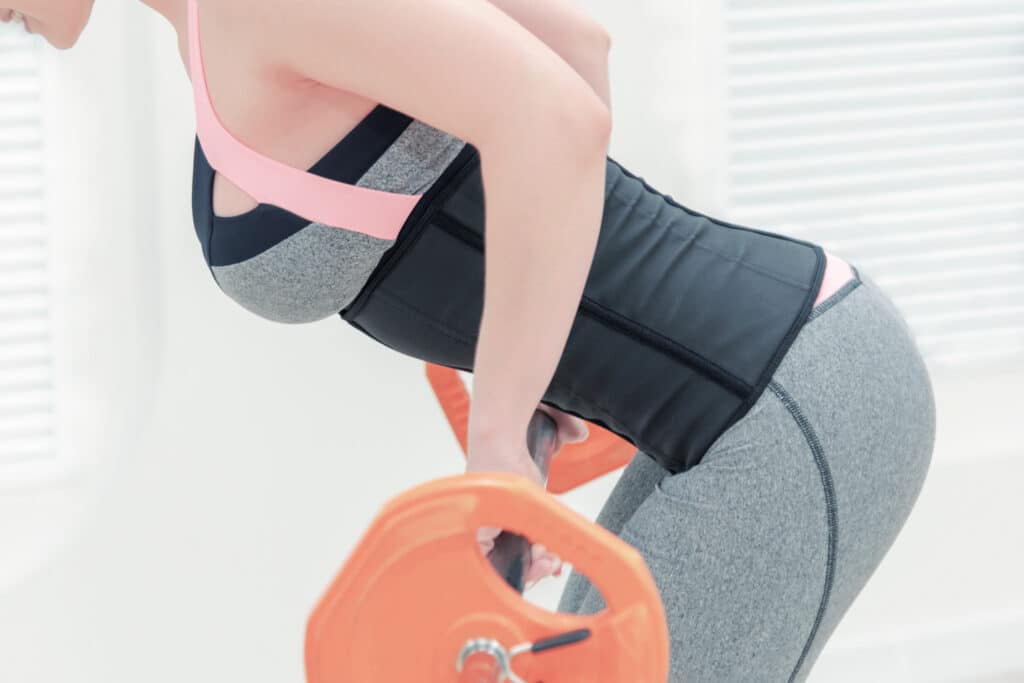
Wearing a waist trainer while you exercise is often said to aid in weight loss. This kind of waist trainer features a latex core that’s sturdier and more durable than an everyday waist trainer.
More often than not, this kind of waist trainer is worn outside clothing only for the duration of a workout.
Steel-Boned Waist Trainers
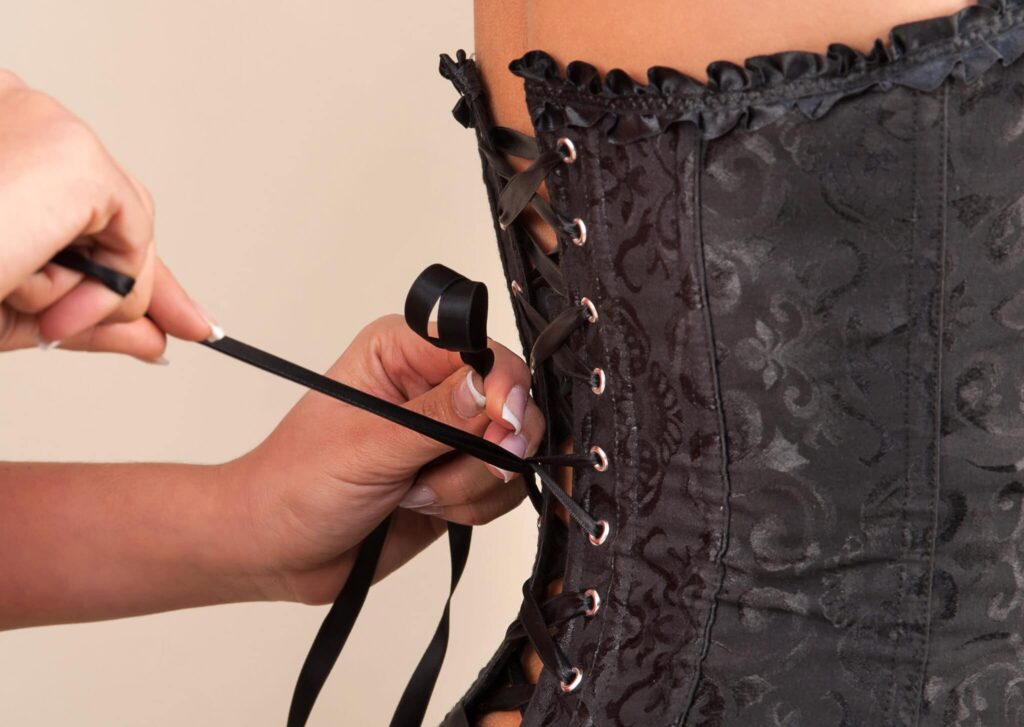
As the name suggests, this next type of waist trainer is reinforced with flexible, sturdy steel boning. These waist trainers typically feature a traditional corset design with tightening laces in the back for a customizable experience.
Claimed Benefits of Sleeping in a Waist Trainer

Those who have experienced a waist training journey often boast about the benefits of the process on the body. These claimed benefits of sleeping with a waist trainer include the following:
Improved Posture
Wearing a waist trainer to bed is said to help better your posture due to the support it provides to your back.
When sleeping in a waist trainer, the metal backing in the structure of the waist trainer makes it impossible to slouch, thus improving your posture over time.
Weight Loss
Although not supported by the medical community, getting sleep in a waist trainer has been linked to helping people lose weight according to proponents of waist training.
The weight loss benefit is often said to be true due to fluid loss that one experiences through the perspiration of the body, which could lead to fat reduction.
Emphasized Curves
Waist trainers are commonly known for their ability to transform your body into an hourglass shape with a slim waist and curvy hips.
Whether you wear one throughout the day or you wear one while you sleep, it is said that wearing a waist trainer for at least eight hours per day will cause your body to be trained to maintain the natural curves shape from the cincher.
However, this claim about waist training has been disputed by the medical community. Waist training for an amount of time longer than eight hours a day can cause potential side effects like acid reflux or rib fracture.
Side Effects of Sleeping in a Waist Trainer
Waist training is a widely debated topic when it comes to its effects on health. Above all, one of the main concerns about waist training is the risk you put your body at for physical damage.
Potential side effects that may arise when you sleep in a waist trainer include:
- Acid Reflux
- Restriction of Lymphatic System
- Rib Fracture
- Damages Proper Digestion
- Reduces Lung Capacity
- Crowding of Organs like Kidneys and Liver
Before diving into your waist training journey, it’s a good idea to consult your physician to make sure you won’t be put in harms way by wearing waist corsets to sleep for 8 hours per day. Your doctor may also be able to recommend more effective and safe methods for trimming your waistline.
Sleeping Positions Effects on Waist Training
When you sleep in a waist trainer, falling asleep can seem like it’s impossible due to the discomfort it provides. So, what’s the best position for sleeping in a waist trainer?
The answer varies for everyone, but there are ways to navigate each sleeping position while waist training so you can avoid any discomfort while you sleep.
Back Sleepers
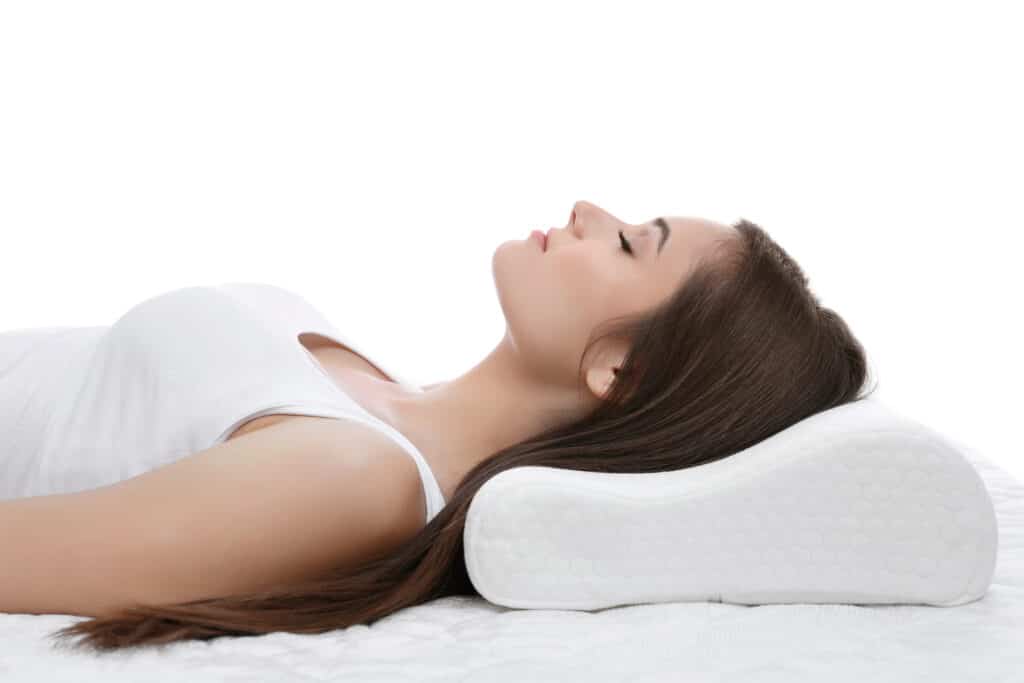
When you sleep on your mattress on your back, you’re at risk for sleeping with improper alignment of your body, often causing lower back or neck pain.
When you wear your waist trainer or corsets while you sleep at night, you might find that your alignment feels out of whack which can lead to an uncomfortable sleep.
In order to sleep comfortably in these corsets, place a pillow under your knees and the small of your back to support and alleviate uncomfortable pressure from your hips, torso, and shoulder area on your mattress.
Plus, it’s a good idea to loosen the lacing or fastening in the back of your corset while waist training to avoid discomfort or acid reflux when it’s too tight.
Side Sleepers

Sleeping on your side for long periods of time while you wear a waist trainer can often cause discomfort due to an unbalanced sleeping position during your sleep while waist training.
Sleeping on your side can lead to feeling immense body pressure on the hips while sleeping with a corset, as your hips are forced to accommodate most of your body weight, thus causing an uncomfortable sleep.
To properly support your body while you wear your waist trainer at night, place a pillow between your waist and the bed. The pillow allows the body to maintain proper balance while sleeping.
Stomach Sleepers

Sleeping on your mattress while on your stomach often leads to neck pain, as your neck is forced to bear most of the pressure from your body at night in bed on your mattress.
Especially while wearing a waist trainer, your sleep will often be hindered do to the uncomfortable nature.
Stomach sleepers should add additional layers of padding to their mattress such as thick blankets to their current mattress, as it will provide more support to your head and neck while wearing a waist cincher to sleep.
Stomach sleepers also may benefit from sleeping without a pillow on their mattress while they wear a corset cincher on their torso at night, as it can help the body maintain a level, pressure-free sleeping position while waist training.
Key Takeaways
Waist training, while you sleep in bed at night, could lead to benefits for weight loss or accentuating curves of the torso, but there could be consequences to your health.
The side effects of wearing a waist trainer can include acid reflux from stomach acid, an impaired digestive tract, and damaged stomach organs in your torso.
Sleeping with a waist trainer at night is often a different experience for each type of sleeper, as sleeping positions all have different effects on the body.
When wearing one at night in bed, waist trainer corsets should be kept looser than usual to avoid an uncomfortable sleep when it’s too tight.
If you’re thinking about wearing a waist trainer corset throughout the day or throughout the night on your body, be sure to consult your doctor beforehand.
Wearing a waist trainer corset isn’t recommended for everyone, making it crucial that you ensure it’s safe for you to wear before sleeping in a waist trainer at night.

